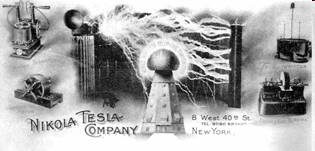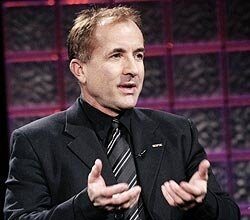This segment will consider:
“Debate Closed” MentalityOverreaching and Armchair QuarterbackingAssuming False Scientific Authority
Double Standards of Acceptable Proof and Ad-Hoc Hypotheses
“Debate Closed” Mentality
Since Pseudoskeptics have by their nature made up their minds on any question long before the evidence is in, they are not interested in participating in what could become an involved, drawn-out debate. On the contrary, their concern is with preserving their own understanding of how nature works, so discordant evidence has to be disposed of as quickly as possible. When sound evidence to that end is unavailable, anything that sufficiently resembles it will suffice. Pseudoskeptics like to jump to conclusions quickly – when the conclusion is their own, preconceived one. Once the pseudoskeptical community has agreed on an “explanation” that is thought to debunk claim X, that explanation then becomes enshrined in pseudoskeptical lore and is repeated ad infinitum and ad nauseam in the pseudoskeptical literature. Subsequent rebuttals are ignored, as is new data that support claims X. Examples are legion.
– Gurwich’s 1932 discovery of mitogenetic radiation is still derided by pseudoskeptics as a classical example of “pathological science” (Irving Langmuir, who coined the term, used it as an example), even though it has been vindicated by three decades of biophoton research.- Pseudoskeptics continue their ridicule of Cold Fusion as a mistake, even use “cold fusion” as a metaphor to refer to what they deem pathological science in general, ignoring a full decade of successful replication of the effect.- Parapsychology continues to be attacked by the hard-core pseudoskeptics with criticisms that were addressed and resolved long ago, leading Radin to remark that
(..) skeptics who continue to repeat the same old assertions that parapsychology is a pseudoscience, or that there are no repeatable experiments, are uninformed not only about the state of parapsychology, but also about the current state of skepticism!
Overreaching and Armchair Quarterbacking
Faced with contradictory or inconclusive evidence, the skeptic will only say that the claim has not been proved at this time, and give the claimant the benefit of the doubt. The pseudoskeptic will make the (incorrect) counter-claim that the original claim has been disproved by the evidence (and usually follow up with generous amounts of name-calling and other extra-scientific arguments discussed below).This distinction between simply not accepting a claim and making a counter-claim is important because it shifts the burden of proof. The true skeptic does not have to prove anything, because she is simply unconvinced of the validity of an extraordinary claim. Pseudoskeptics, on the other hand, making the claim that the extraordinary phenomenon only appears to be extraordinary, and has a conventional explanation, have to bear a burden of proof of their own. Do they? The general answer is no. Most of the professional pseudoskeptics engage in mere ‘armchair quarterbacking’, conducting no research of their own. As far as parapsychology is concerned, Radin sums this situation up as follows:
The fact that most skeptics do not conduct counter studies to prove their claims is often ignored. For example, in 1983 the well-known skeptic Martin Gardner wrote:
How can the public know that for fifty years skeptical psychologists have been trying their best to replicate classic psi experiments, and with notable unsuccess [sic]? It is this fact more than any other that has led to parapsychology’s perpetual stagnation. Positive evidence keeps coming in from a tiny group of enthusiasts, while negative evidence keeps coming in from a much larger group of skeptics.
As Honorton points out, “Gardner does not attempt to document this assertion, nor could he. It is pure fiction. Look for the skeptic’s experiments and see what you find.” In addition, there is no “larger group of skeptics.” Perhaps ten or fifteen skeptics have accounted for the vast bulk of the published criticisms.
Assuming False Scientific Authority
Many high-profile pseudoskeptics pass judgement based on scientific expertise they don’t have. James Randi, for example, shares the following tirade in a July 13, 2001 commentary on his web site:
Just so that you can see how pseudoscience and ignorance have taken over the Internet merchandising business, I suggest that you visit www.hydrateforlife.com and try to follow the totally false and misleading pitch that the vendors make for this product, magically-prepared “Penta” water that will “hydrate” your body miraculously. A grade-school education will equip you to recognize the falsity of this claim, but it’s obvious that the purveyors are cashing in on ignorance and carelessness. Just read this as an example of pure techno-claptrap:
Normally, the water you drink is in large clusters of H20 [sic] molecules. That’s because its [sic] been affected by air, heat, and modern civilization. PentaTM is water that, through physics, has been reduced to its purest state in nature – smaller clusters of H2O [sic] molecules. These smaller clusters move through your body more quickly than other water, penetrating your cell membranes more easily. This means PentaTM is absorbed into your system faster and more completely. When you drink PentaTM, you’re drinking the essence of water. You get hydrated faster, more efficiently, and more completely than with any other water on earth.
Folks, water is water. It’s burned hydrogen, no more, no less. The molecules of H2O – not “H2O” as these quacks write – do not “cluster,” under any influence of the dreadful “air, heat, and modern civilization” that you’re cautioned to fear. True, water exhibits surface tension, and the molecules do “line up” to an extent, though almost any foreign substance in there disturbs this effect – soap/detergent “wets” it readily. But water molecules in “clusters”? No way!The illustrations you see here are totally wrong and fictitious. There’s no such thing as “essence of water,” by any stretch of scientific reasoning, or imagination. This is total, unmitigated nonsense, a pack of lies designed to swindle and cheat, to steal money, and to rob the consumer. And “through physics” has nothing to do with it. I await objections to the above statements. There will be none, because the sellers of “Penta” know they’re lying, they do it purposefully, and they know they can get away with it because of the incredible inertia of the Federal agencies that should be protecting us against such deception and thievery. Those agencies just can’t do the job, and they bumble about endlessly while the public continues to pay through the nose.But notice: the Penta people, on their web page, beneath a family picture of the founders, clearly assert that: At first, [the Penta engineers] tested Penta on plants. They discovered that test seeds would germinate in half the time as the control seeds. Bingo! Hallelujah! We have the means for a test! A simple, inexpensive, clearly demonstrative, test! Such a demonstration would clearly establish the claim these folks are making. Ah, but will PentaTM apply for the million-dollar prize?
Dear reader, with your experience of Tice, DKL, Quadro, Josephson, Edward, and all the parade of others who have declined to be tested, I think that you expect, as I do, that PentaTM will apply as promptly as Sylvia Browne did. The PentaTM page advises us to “Penta-hydrate – be fluid.” Translation: “Believe this – be stupid.”
Randi could not be more wrong. Water is not simply “water- burned hydrogen, no more no less”. It is a highly anomalous substance, and its fundamental properties are still the subject of basic research. Admittedly, the claims made for “Penta-Water” are scientifically extravagant. But can they be dismissed out of hand? Contrary to what Randi asserts with such rhetoric force and finality, water clusters are discussed in the peer-reviewed scientific literature. The interested reader may want to visit Martin Chaplin’s web site for an overview of scientific work on water clustering. Chaplin is not a stage magician, but a Professor of Applied Science at South Bank University, London and holds a degree in chemistry. He is also an active researcher in the field of water clustering, and concludes that
(..) there is a sufficient and broad evidential base for it’s [sic] existence [the existence of the icosahedral water cluster], including the ability to explain all the ‘anomalous’ properties of water.
The existence of scientific evidence for water clusters does of course not imply that “Penta” and similar products have any merit, but it does caution against outright dismissal of these kinds of product. Randi’s sweeping negative statements betray lack of knowledge on the subject and qualify him as a blundering pseudo-scientist. His petty, adolescent criticism of a simple typographic inaccuracy on the “Hydrate for Life” web site and his use of ridicule (he asserts that “Penta” is “magically-prepared” and works “miraculously” while the manufacturer simply states that the process is “proprietary”) support that impression. And yet, Randi rhetorically assumes an air of scientific authority, even infallibility.
[see True Freethinker‘s posts on James Randi]
Pseudoskeptic Michael Shermer makes the following ignorant argument in “Baloney Detection” (Scientific American 11/2001, p. 36):
The biggest problem with the cold fusion debacle, for instance, was not that Stanley Pons and Martin Fleischman were wrong. It was that they announced their spectacular discovery at a press conference before other laboratories verified it. Worse, when cold fusion was not replicated, they continued to cling to their claim. Outside verification is crucial to good science.
The argument against “science by press conference” is a good one, but it would be more credible if Shermer applied it to accepted science too. A prime example is Robert Gallo’s announcement of the discovery of the “probable cause of AIDS” in a press conference in 1984 that preceeded [sic] publication of his research in Science and secured a political commitment to his alleged facts before critical scientific discussion could take place.
What makes Shermer’s argument ignorant is his use of cold fusion as an example. Real scientists who have actually studied the evidence for cold fusion have come to very different conclusions. In February 2002, the Space and Naval Warfare Systems Center of the United State Navy in San Diego released a 310 page report titled Thermal and Nuclear Aspects of the Pd/D2O System that discusses the overwhelming experimental evidence that the cold fusion effect indeed exists. Dr. Frank E. Gordon, the head of the center’s Navigation and Applied Sciences Department, writes in the foreword:
We do not know if Cold Fusion will be the answer to future energy needs, but we do know the existence of Cold Fusion phenomenon through repeated observations by scientists throughout the world. It is time that this phenomenon be investigated so that we can reap whatever benefits accrue from additional scientific understanding. It is time for government funding organizations to invest in this research.
Yet Shermer, a psychologist by trade, feels called upon to pass summary negative judgment on this field of research.
[for more on Michael Shermer see here]
Double Standards of Acceptable Proof and Ad-Hoc Hypotheses
The true skeptic will apply her skepticism equally to conventional and unconventional claims, and even to skepticism itself. In particular, the true skeptic recognizes an ad-hoc hypothesis regardless of the source. The pseudoskeptic, on the other hand, reserves her critical facilities for unconventional claims only.
William R. Corliss, the author of The Sourcebook Project (a comprehensive collection of anomalies and unexplained phenomena reported in scientific journals) gives a salient example of that kind of behavior in the Journal of Scientific Exploration (Vol. 16, 3 p. 446):
One would expect a lively interface between the Sourcebook Project and the several groups of skeptics, as typified by the Committee for the [Scientific] Investigation of Claims of the Paranormal (CSICOP). After all, my catalogs do challenge those paradigms the skeptics defend so ferociously. Actually, there has been no traffic whatsoever. While mainstream Nature has reviewed five of my books, the skeptics have shown no interest in evaluating any of the Sourcebook publications. The skeptics, it seems, are never skeptical of established paradigms, only those observations that threaten to disestablish them.
The Skeptic’s Dictionary, a leading pseudoskeptical online resource, gives us a great example of this selective blindness. Under the heading “ad hoc hypothesis”, we find the following definition:
An ad hoc hypothesis is one created to explain away facts that seem to refute one’s theory. Ad hoc hypotheses are common in paranormal research and in the work of pseudoscientists.
What Todd Caroll, the author of the Skeptic’s Dictionary does not see fit to share with his readers is that some of the most celebrated “discoveries” of mainstream science are mere ad hoc hypotheses designed to cover the failure of theories to agree with observational evidence. Some of these ad hoc hypotheses, such as the hypothesis that almost all of the matter and energy of the universe exists in a form undetectable by the instruments of science, that there is a particle that causes mass (the Higgs Boson), and that people who fail to improve on AIDS drugs must be infected with a resistant mutation of HIV, are then taken as facts, with the strongest evidence for the existence being that accepted theory requires them! And yet, you will search skeptical publications in vain for truly skeptical discussion of these subjects (as opposed to ones that agree with the mainstream consensus). “The Mainstream Consensus Is Always Right” seems to be the motto.The following is an anecdotal example of an ad-hoc theory in established science. In its June 2002 issue, Scientific American ran an article on AIDS that contained a chart titled “World AIDS Snapshot” (p. 41). Combining the absolute numbers of people who are HIV positive with population figures from the CIA world factbook, I found that in Australia/New Zealand, only one person in 1548 was HIV positive, while in North America (Mexico counts under Latin America, according to the UNAIDS website), 1 person in 329 was. Given that the predominant strain of HIV is the same in both regions (clade B), how can the rate of infection be almost 5 times higher in North America than in Australia/New Zealand? Sexual (mis)behavior in both regions is comparable, as evidenced by the fact that incidence rates for classical STDs are virtually identical (according to WHO figures for 1999):
I emailed Sciam staff writer Carol Ezzell and inquired what the cause of this discrepancy could be. I received the following reply:
Our statistics come from the UNAIDS (see the website at www.unaids.org). Australia/New Zealand has a 0.1 percent adult prevalence rate, whereas North America has a rate of 0.6 percent. Most of the cases of HIV infection in Australia/New Zealand occur in men who have sex with men. A key tipping point in the broadening of HIV infection occurs when the virus rages through IV drug abusers and then enters people (men and women) who have sex with those drug abusers. For whatever reason, this hasn’t happened in A./N.Z.
Actually, the alleged broadening of HIV infection into a general epidemic that effects large numbers of heterosexuals has not happened anywhere in the developed world, even though it was widely predicted by experts in the 1980s. The claim that it somehow exists nonetheless, and, for some unknown reason, more so in North America than in Australia/New Zealand, is a perfect example of “a hypothesis created to explain away facts that seem to refute one’s theory”. Skepticism towards the prevailing view of “HIV/AIDS” seems to be called for, but you will find none in the pages of the Skeptical Inquirer and other “skeptical” publications.
~~~~~~~~~~~~~~~~~~~~~~~~
A plea: I have to pay for server usage and have made all content on this website free and always will. I support my family on one income and do research, writing, videos, etc. as a hobby. If you can even spare $1.00 as a donation, please do so: it may not seem like much but if each person reading this would do so, even every now and then, it would add up and really, really help. Here is my donate/paypal page.
Due to robo-spaming, I had to close the comment sections. However, you can comment on my Facebook page and/or on my Google+ page.




